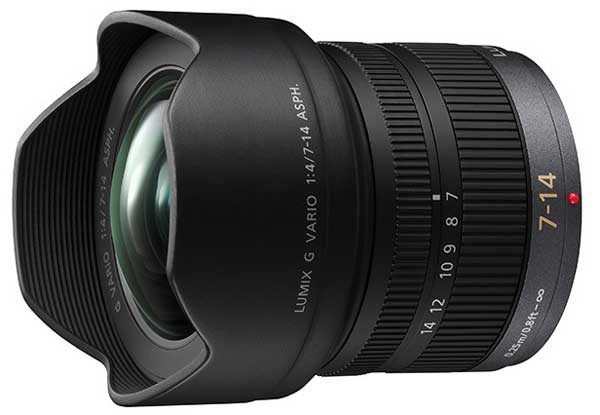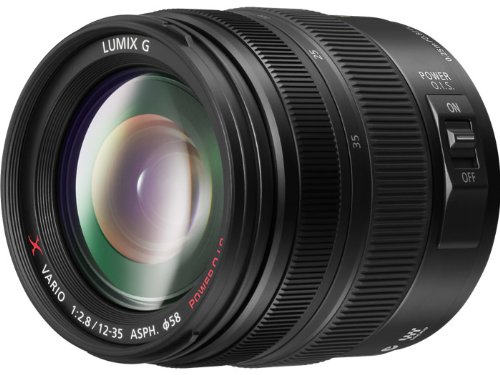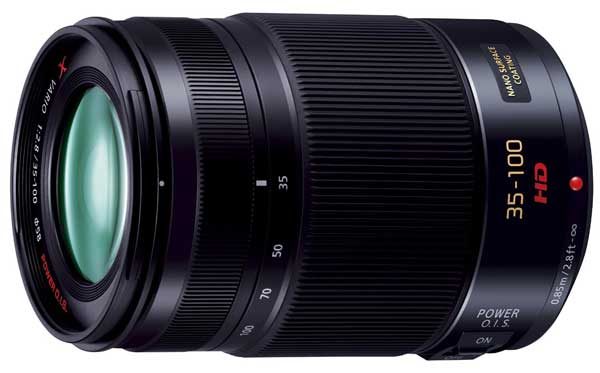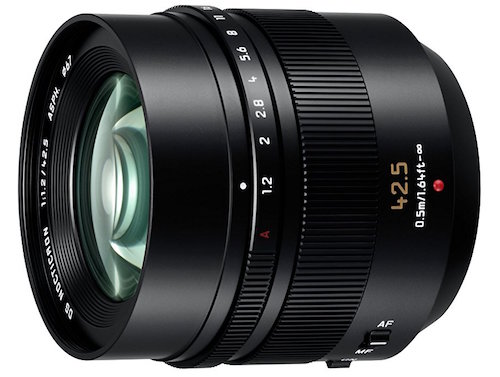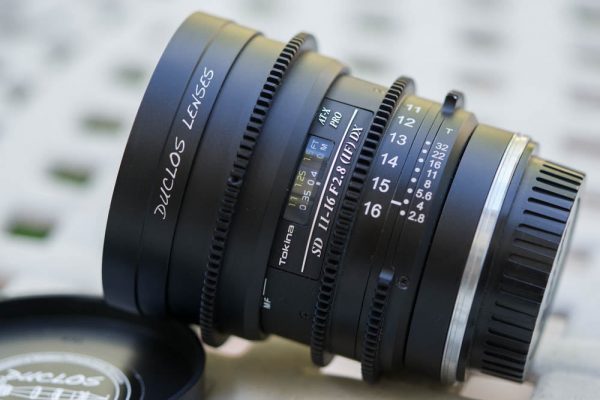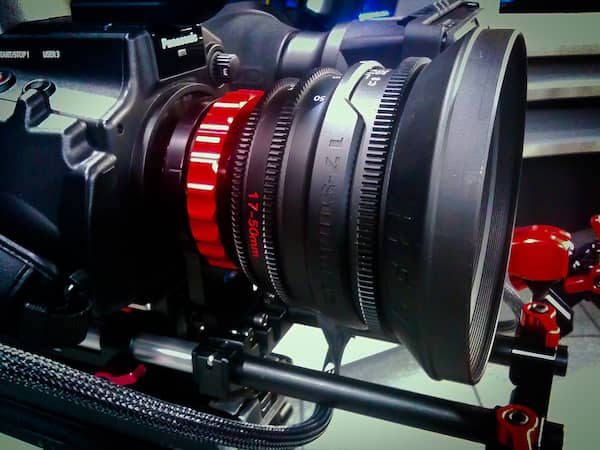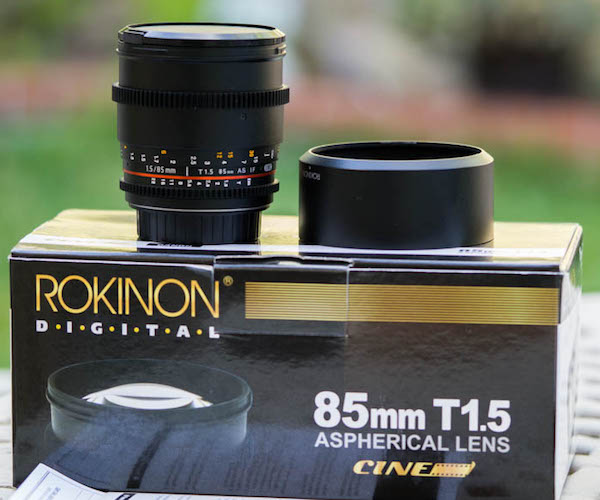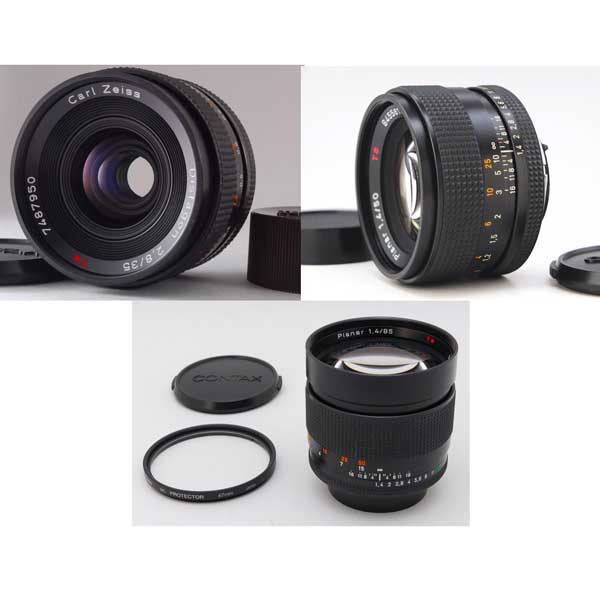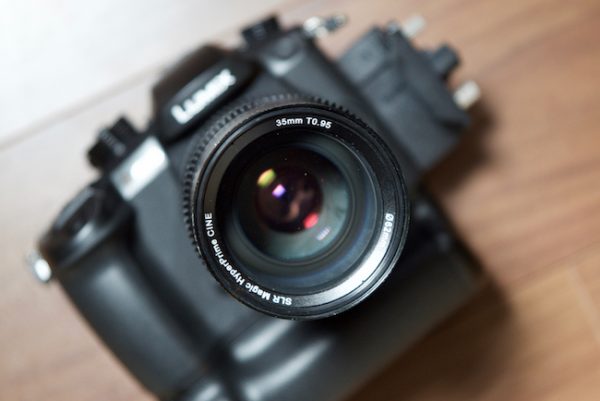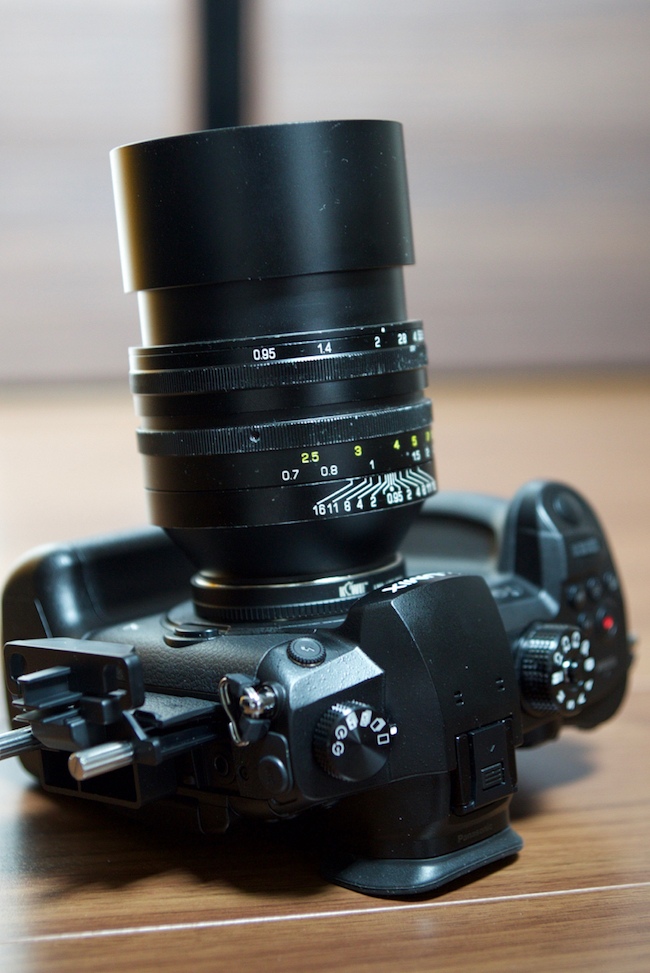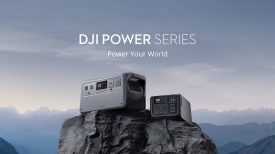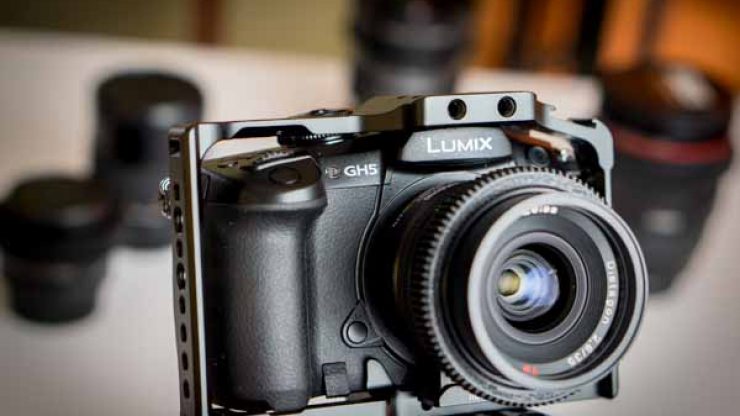
The Panasonic GH5 is a popular new camera, in stock and shipping from most of the usual retailers, but have you thought about what lenses you should get for shooting video? In this post I’ll help you get started and hopefully you will be on the right path to capturing some sweet 10-bit footage on your shiny new GH5.
New to MFT?
If this is your first Micro Four Thirds camera then welcome to the club! I’ve owned a GH3, GH4 and now a GH5. Yeah I decided it would be a good one to have. Why? Because it’s packed with so many great features for shooting video. Panasonic fixed a lot of what I didn’t like in the GH4. For example getting audio into it without the dreaded YAGH. Wow. That was a really bad design and expensive too. I used it on a series and the workarounds just to use balanced audio into the camera weren’t fun.
I digress… I, like many, had issues with the noise at ISO greater than 800. The grain looks better now and has improved ISO performance. I need to have usable 1,600 ISO just in case and the GH5 is usable at 1,600. Just make sure you use lights and light your scenes for the best performance. Deep dark shadows when raised have noise. This is typical for many cameras. Shoot for the edit!
I personally don’t care about stills with the GH5 that much. Yes you can take really nice stills with the GH5 but for me it’s a nice compact 10-bit video shooting machine. If you want to take a lot of stills with good autofocus performance then looking at native Panasonic lenses would be a great first choice. The only downside is the focus-by-wire native lenses have. I’ll cover this in a moment.
Panasonic Native Lenses
These are the three Panasonic Lumix zoom lenses that work well as a set. I’ve owned all three and it’s a fantastic kit that has the full range most users need. This is the easiest way to get up and running fast with the GH5. Panasonic has updated some of the popular Lumix zooms to match the advancements with the GH5’s autofocus and stabilization features. They have also improved the coatings on the lenses for better flare control. If you want to save some cash look for used copies of the original versions.
The disadvantage of these Lumix zooms is the focus-by-wire system. For shooting video in manual focus it’s really a horrible experience. If you like repeatable focus and manual control these lenses will make you crazy. Start moving down the post to “Manual Lenses.”
Lumix 7-14 f/4
For a wide zoom I like the Panasonic 7-14 f/4. I wish this lens was f/2.8 since noise at high ISO on the GH4 was an issue. The GH5 has improved on this but I don’t expect it to be a low light camera – keep this in mind when buying lenses. Faster is always better (but also heavier).
Lumix 12-35 f/2.8
The Panasonic Lumix G X Vario 12-35mm f/2.8 Asph Version 2 and 35-100 version 2 have in-built image stabilization that takes full advantage of the new Dual I.S. 2 system in the GH5. This allows the five-axis in-body lens stabilization to work with the lens optical stabilizer for even better performance. I like these two lenses a lot. They were my go-to kit. If you shoot with full frame cameras this duo is the same as a 24-70 and 70-200mm at a fraction of the size and weight. With these two lenses you can get a lot of coverage plus they both have a constant f/2.8 aperture. I prefer constant f-stop on lenses for video use. Makes shooting quicker so you don’t have to change your exposure settings and miss the shot.
Lumix 35-100 f/2.8
I think this one might be my favorite of the three. I do tend to like longer focal lengths for their look. The 35-100 is sharp and bright all the way through the range. Can’t go wrong here.
Panasonic Leica Nocticron 42.5mm f/1.2
This is one of the best Panasonic Lumix lenses available especially for portraits or when you want to isolate the subject from the background like when shooting an interview. It’s expensive at $1,600 US, but if you want that beautiful bokeh this lens delivers. It’s been on my list for a while but hasn’t been in the cart. Yet. Another very good prime is the Lumix 25mm f/1.4. Fast and compact is the name of the game with MFT lenses.
Also worth looking at are the Olympus M. Zuiko models. These are high quality lenses that tend to get ignored. I’m guilty of this myself. They are more expensive but have a heavier pro build quality and are high performance sharp lenses. They don’t give you the versatility of a Canon or Nikon mount with an adapter but will work very well with the native mount for photography as well. The models that stand out are the following but are by no means the only ones to look at:
- 17mm f/1.8
- 25mm f/1.8
- 45 f/1.8
- 75 f/1.8
- 12-40 f/2.8 Pro
Manual zooms
Duclos (Tokina) 11-16 f/2.8 Cine Modded Zoom (APS-C)
This is a great lens and comes in several different models. I bought the Duclos Cine version that cost me an arm and a leg because at the time Tokina didn’t offer it in a cine style lens. Well now they do. The optics are very good and it’s APS-C so the crop factor will be less pronounced.
The field of view is 8.8mm-12.8mm at a constant 2.8 f-stop. Tokina makes this lens in a few different mounts including MFT. Again I would get the Canon and an adapter so it can be used on pretty much any camera. This cine version is fully manual and also available as a stills lens with auto focus.
Adapters
This might be a good time to talk about adapters. Once you decide to go outside the safe world of native lenses for MFT cameras you are going to need to use adapters. One of the great features of the mirrorless GH5 is pretty much any lens will work on it if you have the proper adapter.
Yes even expensive PL cinema lenses with a PL to Micro Four Thirds adapter will work. Above is my Red 17-50 on a Panasonic AF-100 (I sold both of these by the way).
Primes
Primes are a good option if your budget is tight because you just dropped $3K on a GH5 and audio module. Yes I highly recommend getting the XLR module. This little add on will get audio into the camera in a clean and simple way. Much better than the YAGH.
A great budget lens is the Rokinon line of Cine lenses in the Canon mount.
Yes you can get MFT mount but then you can’t use them on any other camera. I shoot with a Sony mirrorless and Canon Cinema EOS cameras as well. With an EF to E-Mount adapter I now can use the same lens on three different cameras. Good way to stretch that buck!
A good start would be a 24mm, 35mm, 50mm and 85mm. Since these are full frame lenses you will only be using half of the lens. The GH5 has a crop factor is about 2x, so a 24mm full frame lens will have a field of view of around 50mm. This crop stuff is something you will have to get used to but it’s easier since you basically take any full frame lens and double it to better understand what you are getting. The Rokinons are very good for the price. They are fast as well so you will be able to get some nice shallow depth of field.
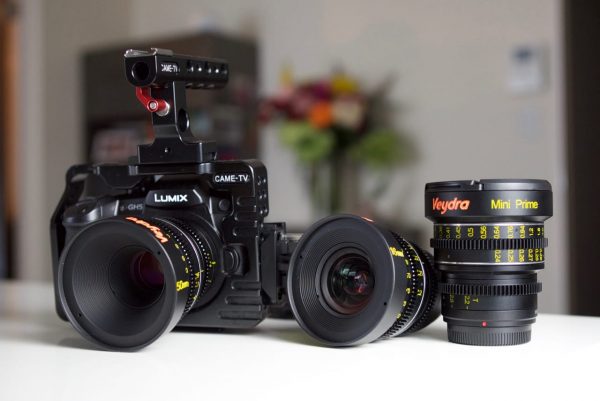
If cine lenses are more of your interest Veydra makes a very nice set made specifically for MFT cameras. These also come in E-Mount so if you want to use them on a Sony a6500 0r a7rii in S35 mode you can swap the mount out. It’s not a fast process but still a great option. I used a set on an FS7 and loved them. My favorites are the 25mm and 50mm models.
Adapters bring lots of options
One the best features of the micro four thirds mount is the ability to use practically any lens with an adapter. This is why I recommend getting Canon or Nikon lenses since they can be used on different cameras as well. The MFT mount won’t work on a Canon body.
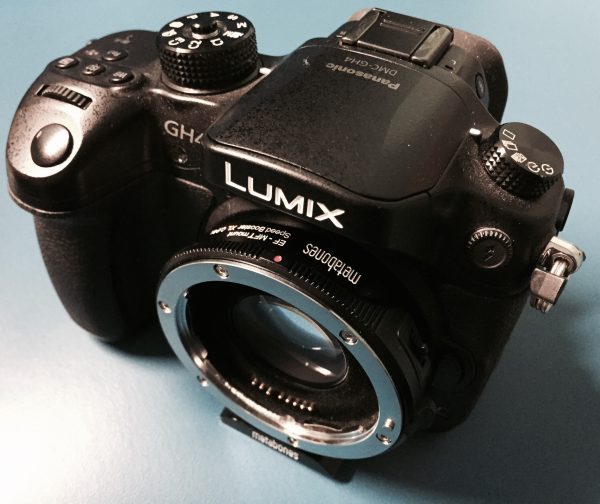
Metabones has a lot of options when it comes to adapters for the GH5. How about 29 different options?
The GH5 looks to be a very good upgrade from the GH4 and the versatility of the MFT format makes it open to so many options when it comes to lenses I couldn’t possibly cover them all here. I do recommend getting the fastest models: f/2.8 or faster. This might make getting that shallow depth of field look you want a little easier.
Going retro: vintage lenses on the GH5
Lately I picked up a small set of Zeiss Contax vintage primes from the mid 1970s. My kit includes a 35mm f/2.8 MMJ, 50mm f/1.4 MMJ and a 85mm f/1.4 MMJ. These are really nice lenses that have a lot of character while still being very sharp. If you like a lens that flares then vintage is a great way to go. A word of warning when you get into the Contax lenses or any vintage lens: I was told this is a rabbit hole and be careful. Truer words have never been spoken.
These are full frame lenses with a C/Y or Contax Yashica mount. I needed an adapter for them to work on the GH5. I could get a dumb adapter no problem, but decided to go with a Metabones Speed Booster instead. I also added EF mount adapters so I can use them on a C300. This caused issues with the Speed Booster XL. I lost infinity focus. Too many adapters isn’t a good thing! To fix the issue I took the EF mounts off and went with a C/Y to MFT Speed Booster. Now it works perfect. I don’t get the full frame look with this model but I do get a little boost and infinity focus with all my other APS-C lenses as well.
Modern Zeiss lenses on the GH5
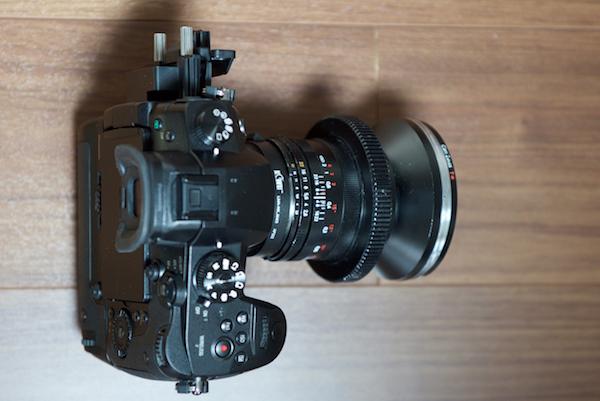
Here is another Zeiss lens. The ZF2 primes in Nikon F-mount. Nikon F mount gives you a full manual iris and it is easy to get them de-clicked and have cine gears added as seen in this picture. There is a whole range of focal lengths available and if you don’t mind the opposite focus direction, they make for good lenses for shooting video. I personally can’t get used to the ‘Nikon way’ so I tend to avoid them.
Last but not least…
SLR Magic makes some very nice MFT mount manual lenses. The 35mm T0.95 HyperPrime CINE for example. It has a Leica M mount (there are lots of Leica M to M4/3 adapters available). It’s manual focus only, and covers up to an APS-C / Super35 sized sensor, weighing in at just over 760 grams.
It comes with a built-in sun hood and a metal front cap. The lens also comes with de-clicked aperture as standard as well as cine gears. It focuses down to a distance of 23cm and the lens features 11 aperture blades which help create a very circular bokeh. The bokeh needs to look nice because you will see a lot of it when the lens is wide open. I quite like the look of the out of focus areas and the highlight fall-off when using this lens. It has a very soft, almost dreamy look to it. Don’t confuse this with the lens being soft – even wide open at T0.95 it is incredibly sharp.
The Second lens from SLR Magic is the SLR Magic 50mm T0.95 HyperPrime CINE. This particular lens was originally made for aerial filming specialists Space Cam to use on modified RED cameras for helicopter work. De-clicked aperture, manual focus only, cine gears, full frame coverage – this shouldn’t be confused with SLR Magic’s 50mm F0.95 HyperPrime lens for E-mount and M4/3. It’s three times the price at $3,000 US. This lens is very good and a lot of reviewers have said it performs very closely to the $11,000 US Leica Noctilux ASPH.
Lenses for the GH5: final thoughts
Woof! That was a lot of lens talk. and I hardly scratched the surface. The main takeaway here is we have a ton of great options when it comes to lenses for the GH5 and MFT mount. It’s a really versatile system and we can get very creative building up a set for video use. Just be careful to not fall into that rabbit hole. Maybe just a peek will do…
Whats your favorite lenses for the MFT GH5? Lets do some lens talk in the comments section below.

